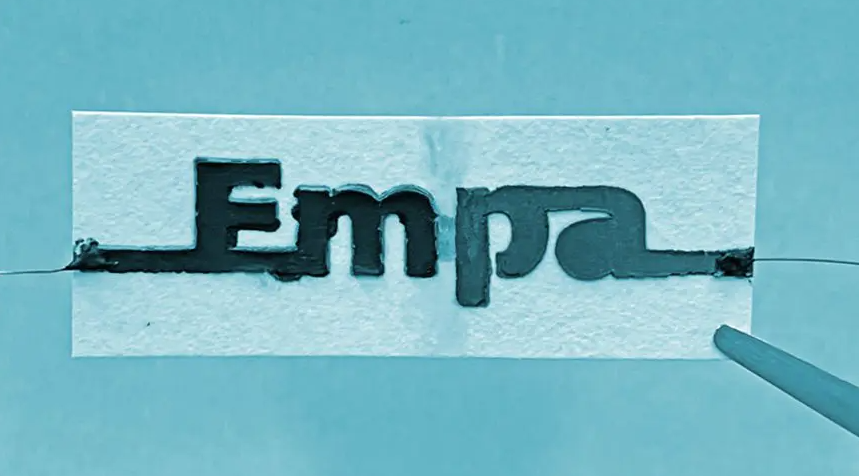(Sustanabilityenvironment.com) – The world still needs disposable batteries. For a small part of the low-power electronics, especially the disposable ones, these batteries offer, in fact, the best design solution. But at the same time, it is necessary to adopt solutions that minimize their impact on the environment. Solutions such as the paper battery were created in the Swiss laboratories of EMPA. The special stack, designed by Gustav Nyström and his team, consists of three inks printed on a strip of rectangular paper to form a cell of one square centimeter.
In detail, the team dispersed the whole strip of sodium chloride (kitchen salt), immersing one of the ends in wax. On one side of the paper has, then, printed an ink containing graphite flakes, which serves as the positive pole of the battery. A second ink containing zinc powder was deposited on the back to realize the negative pole. A third ink containing graphite flakes and carbon pigment finally coated both sides.
By adding a small amount of water, the salts inside the paper dissolve and the charged ions are released, thus making the ionically conductive electrolyte. These ions activate the battery by dispersing through the paper, causing the zinc to oxidize in the ink at the anode and releasing electrons.
As reported in the journal Scientific Reports, the disposable paper battery of the EMPA would lend itself to the power of small low-power electronic devices, such as smart labels, environmental sensors or diagnostics. A capability demonstrated by the tests carried out by the group by associating the innovative batteries with an alarm clock with a liquid crystal display. Analysis of the performance of a single-cell battery revealed that after adding two drops of water, the device activated within 20 seconds. “The peculiarity of our new battery is that, unlike many metal-air batteries that use a metal foil that is gradually consumed as the battery runs out, our design allows you to add only the amount of zinc to the ink you actually need for the specific application,” concluded Nyström.

